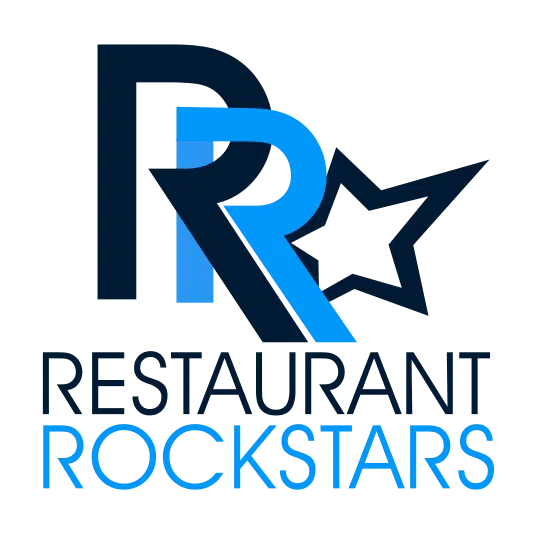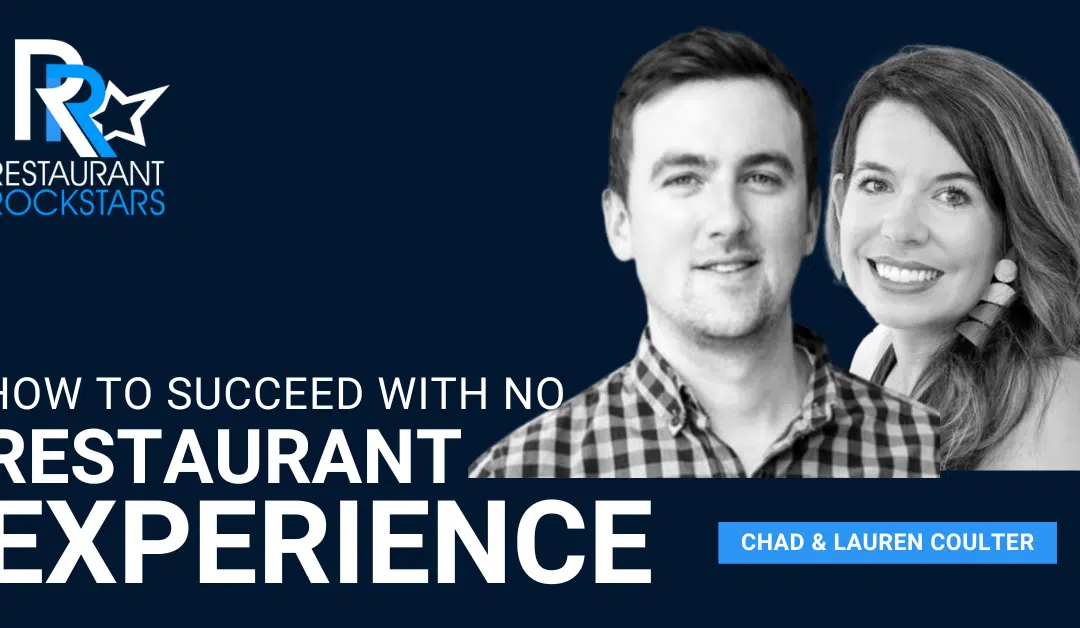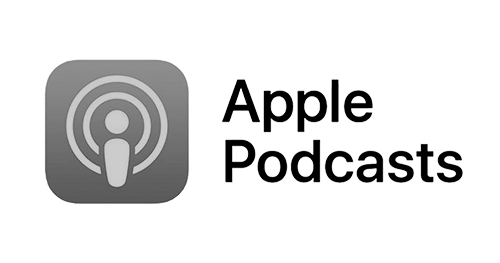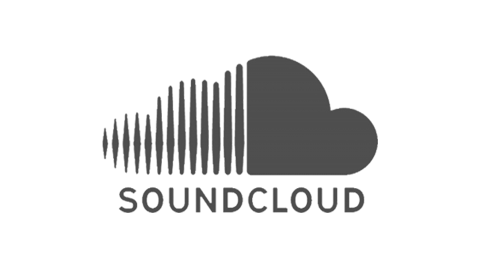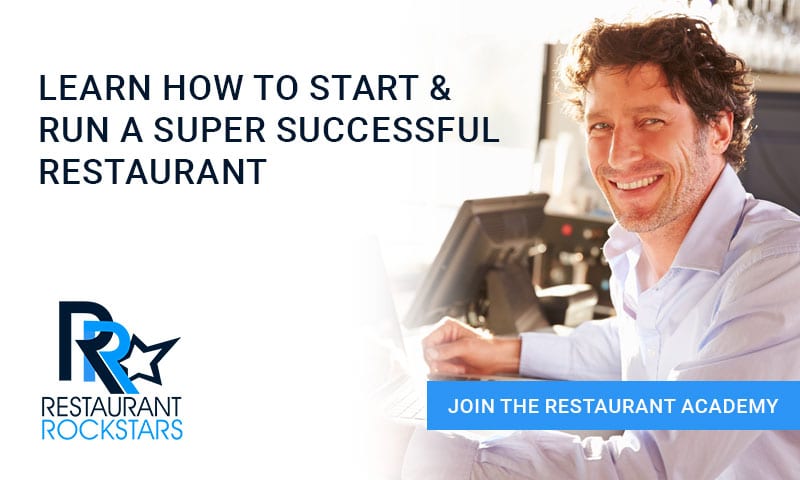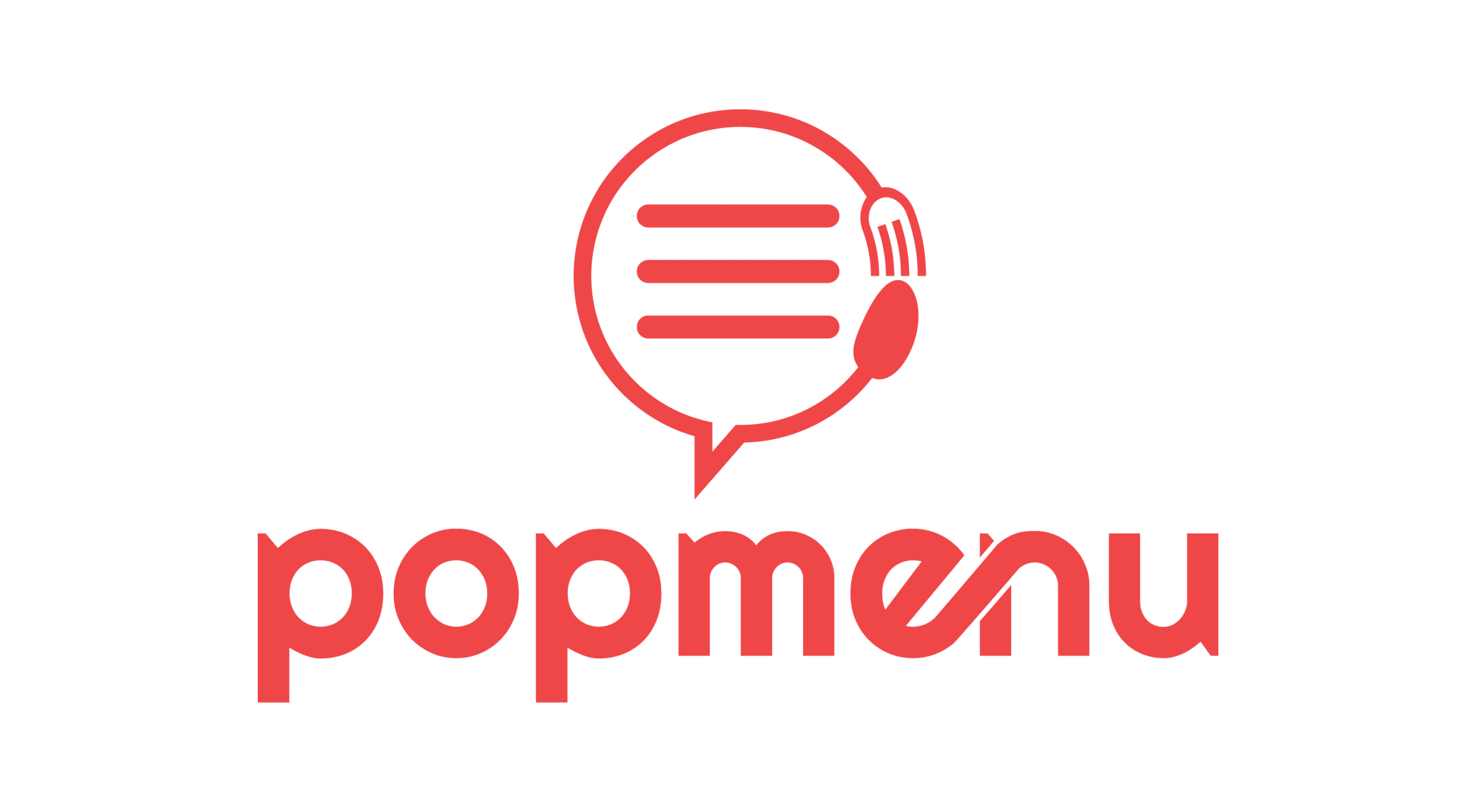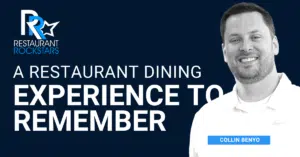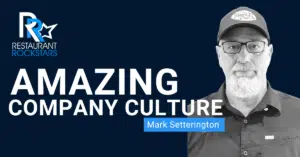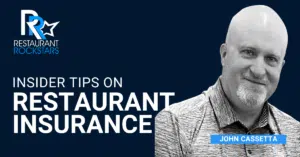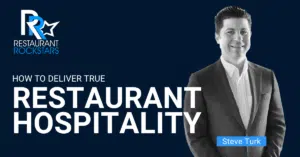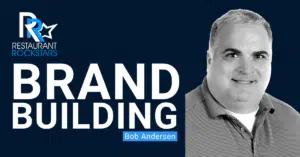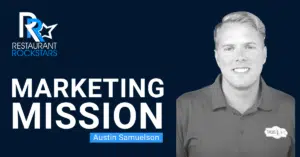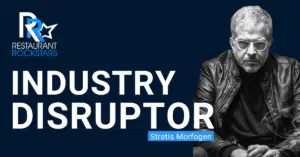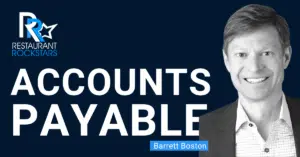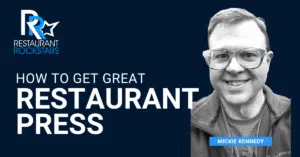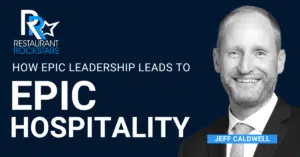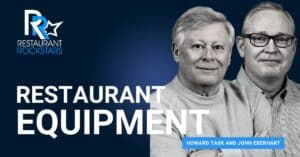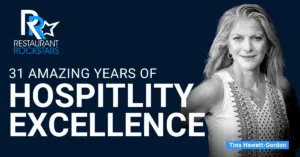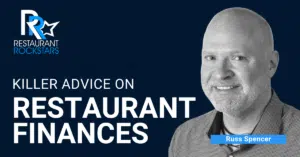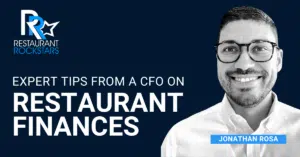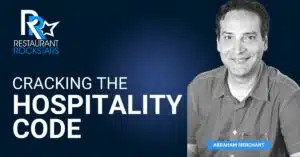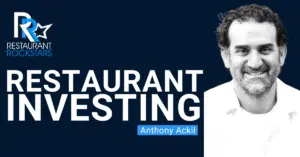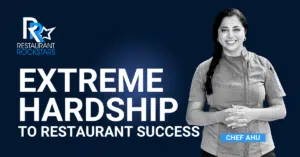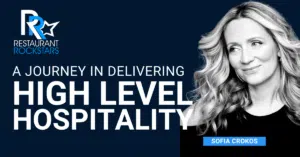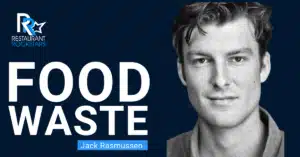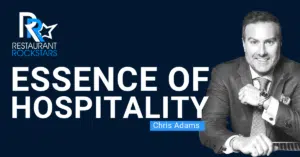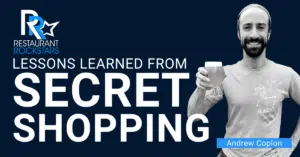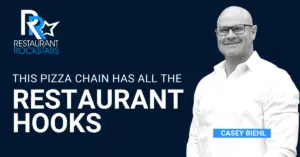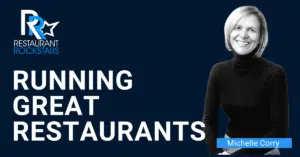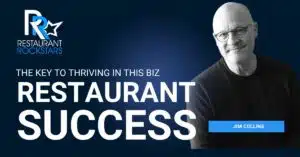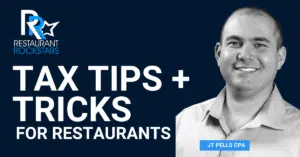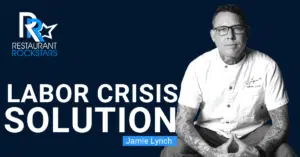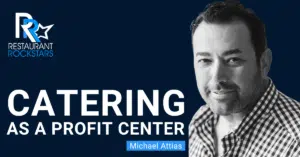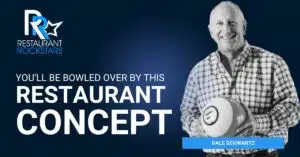Restaurant Rockstars Episode 356
How to Succeed in the Restaurant Business Without Experience
LISTEN HERE OR ON YOUR FAVORITE PODCAST PLAYER
With 1000 details to running a successful restaurant business, there are probably 1000 more to growing it into multiple locations and franchising.
It’s an even greater challenge to do this with no prior restaurant experience.
In this episode of the Restaurant Rockstars Podcast, I’m speaking with Chad and Lauren Coulter of Biscuit Belly, both former pharmacists turned restaurateurs.
When they got into the restaurant business, they started with a simple concept and then pivoted to grow a wine and tapas bar to 5 locations. They took this even higher with a successful breakfast and brunch concept called Biscuit Belly.
This concept is a case study on delivering great food, drink, and fun, while building a super powerful brand.
Watch or listen as Chad and Lauren talk about:
- Having a crystal-clear vision for their restaurant business and working with the best to bring that vision to life and grow the company.
- Creating a company culture based on quality, service, and an emphasis on the team.
- The importance of efficiencies, cross-utilizing ingredients and maintaining margins
- Their winning social media strategy and optimizing Instagram and Tik Tok
- Leadership styles and staying in their lane as a married couple and operators.
- Experiments that worked and those that didn’t
- The key to a successful retail and beverage program
And of course, choosing funky names for the menu items that capture the guest’s imagination and sustaining the buzz.
Don’t miss this episode, then go out there and ROCK your own Restaurant!
Roger
Connect with our guest:
www.biscuitbelly.com
BB Instagram: @biscuitbellybiscuits
Facebook: https://www.facebook.com/biscuitbellybiscuits/
BB TikTok: @biscuitbellybiscuits
BB LinkedIn: https://www.linkedin.com/company/biscuitbelly
Lauren LinkedIn
Chad LinkedIn
Thanks for joining once again on the podcast. My guest this week super inspired operators from their corporate base in Louisville, Kentucky, they’re growing a brand, a super powerful brand of breakfast and lunch places called biscuit belly. Now, it’s all about systems. And we’re going to talk all about marketing, specifically the branding. It’s all about social media and how to get the most of your customers doing the marketing for you and building your brand. It’s amazing. We’re going to talk about critical financial controls and maximizing margins while delivering true value to your guests. We talk about technology, we talk about leadership and company culture and the labor challenges and how there are sidestepping that and surrounding themselves with great people and hiring the right people. This episode has it all, you’re not gonna want to miss it. Thank you so much to our sponsors this week for supporting us. And if you’re interested in systems really dialing your operation, look at the restaurant Academy at restaurant rockstars.com It’s a series of systems that dials in your critical finances. It teaches your team to serve and sell and deliver true hospitality. It’s all about powerful marketing and brand building that drives ROI and it’s trackable, as well as efficiencies across your organization. Best of all, you can give access to any of this content to your team members so that they can help build your business. Again, it’s the restaurant Academy at restaurantrockstars.com Now on with the Episode
You’re tuned in to the restaurant rockstars podcast powerful ideas to rock your restaurant. Here’s your host Roger Beaudoin.
Rock Stars The busiest time of the year is coming. Is your staff ready for the holiday rush? Well this year give your team the gift of pop menu AI answering a simple solution for phones ringing off the hook. Ai answering handles calls 24/7 365 days a year so your staff can focus on in Person guests. Customize your greetings and responses, answer common questions, promote specials and events and send follow up links to ordering and reservations. AI answering handles at all while escalating more complex conversations back to your team. Now never miss another tasty revenue opportunity. Pop menu is the marketing technology platform designed to make growing your restaurant easy. Discover more AI restaurant tools that turn your to do list into an already done list. Request a demo today and my listeners for a limited time will get $100 off their first month plus lock in one unchanging monthly rate. Go now to popmenu.com/rockstars again get $100 off your first month at popmenu.com/rockstars.
Listen when I ran restaurants I had my core values the things most important how I ran my restaurants, monitoring daily operations training my team for consistently great guest experiences food safety, quality assurance and preventative maintenance. All this took a system. Well here’s what Xenia can do. Xenia gives you a modern app, really an operational base camp that scales standard operating procedures, trains your team controls operations, and even manages food safety. Now I really like their sensors that continuously monitor temperature for fridges and freezers so you can proactively prevent inventory losses. And how valuable is that. Now whether managing a single or multiple locations the Xenia app helps you ensure consistency, compliance and accountability across your operation. You can see full detail in real time from anywhere in your Xenia dashboard with automated reports right to your inbox. Now again, this was vital in my restaurants. Xenia is offering my listeners white glove service with free onboarding and implementation. So you can jump straight into immediate usage and value Xenia starts at just $69 per month per location. So get my special deal at www.Xenia.team/rockstars. Xenia is spelled Xenia.
Hey everyone. Welcome back to the restaurant rockstars podcast and Chad Lauren, welcome to the show. Thanks for being here. How are you today?
Doing great. Thanks for the invite. sharing our story today.
Well you know your brand has a fun ethos. It seems like it’s all about fun, and we’re gonna dive into the story. But first, let’s talk about you pharmacist turn restaurateurs. What’s up with that,
you know, ask myself that all the time.
You know, drugs to biscuits seemed like the natural progression. You know, it’s all about the dopamine.
How did it happen? Like where did the brainchild come from? You know, you were both having a long career in pharmacy and then all of a sudden somebody came up with this idea. Hey, let’s start a restaurant. It’s so exciting. Like tell us how it came about whose vision was it? Where did the idea first come from? And then what happened?
Yeah, so Lauren and I are both from Georgia, from pretty small town and you know, the biscuit reign supreme there, obviously for a breakfast meal. And that always kind of resonated with me and even as a pharmacy intern at the local CVS, my pharmacist, the pharmacist in charge there had a brother who owned a little biscuit restaurant, but a biscuit Express population of you know, 600 people and so it was where were all the hunters went before they, you know, went deer hunting to get the good the carbs for the for that for that day. Gotcha. But yeah, we both the pharmacy school, I graduated from Georgia, Go Dawgs. in 08 and then Lauren graduated from a smaller university in Savannah, Georgia. That’s where we met. I did my residency in Atlanta, and we moved to Louisville and 09 and got the entrepreneurial itch in 2011. When I was on a study abroad trip with four students internationally, I’ll let Lauren talk about what concepts you went to the kind of started at all.
Well, we went to a some girlfriends and I went to a paint and drink concept. And we’re literally sitting there, you know, painting, and I’m thinking this painting looks pretty good, actually. And I am absolutely not an artist. And so Chad is in Australia, and I texted him, this is what we need to do. And we’d spent some time on the phone with other franchisors just learning about them and trying to understand the economics of different things and looking around our city and trying to figure out what does our city really need right now. So at the time, I think we had dug into a pizza concept and you know, mobile’s the, I feel like at the center of all things, pizza. And so we’re like, that’s not really going to work. But when I went into this, I thought, Okay, this is painting artsy stuff. This is alcohol related. This will kill it in Louisville. So we opened that pretty quickly thereafter. And it was great. I mean, it went over kind of gangbusters.
Did you have the name from the beginning? Or did that come later, I mean, how to tell us about the brand building because your brand is super powerful. You go to your website, and everything is cohesive, your social media we’re gonna get to is incredible. Everything about the brand is on target on strategy on point. And it’s fun, and it’s catchy, and it’s alive. So tell us about the brainchild for biscuit belly, we talked about, you know, the the southern charm in the Southern cuisine and the biscuits and all that sort of thing. But, you know, that’s one thing, putting out a great product, but then creating a brand around that product is an entirely different thing. And you’ve done a particularly great job with that. So let’s let’s elaborate Dig, dig a little deeper on that.
Yeah. And to follow up where we’re at Lauren was, we were selling a lot of wine at this, this concept, and that, that then made us think, Okay, well, let’s open up a wine bar, there wasn’t a wine bar. And then we opened up and kind of developed this concept called Lubino. And that was a five unit concept 60 wines by the glass, small plates like top and style, and started our first one in 2014. We often kid that our first time working in the restaurant industry was the night we opened our first one, our first Lubino, you know, and so, kind of fast forward, we grew that to five locations, and started talking about doing this biscuit thing kind of as a spin off slash, you know, tilt of the hat to where we came from. And, and yeah, we we actually, for the first time went to a professional group and said, Hey, we’ve got this idea, like, let help us create this concept on both from the branding the name and we had like 50 names written down, you know, in the notes section of my phone. And we settled on biscuit valley with the help of this team and really gotten to the nitty gritty of what is the field going to be when people walk in and what’s the color scheme going to be what’s the logo look like? And you know, the rest is kind of history from there and we didn’t really leaned in into the food and the way it was presented. We actually have a class and we open up a new store. Our director of training actually has like an Instagram ready class because we always say the camera eats first, right? Yeah. Take a picture. And and so you see that within social media and we definitely inherited a lot of that into the brand itself.
That’s our audience knows this is probably is one of if not the most challenging business on the planet. I’ve been in it multiple times. I’ve been at a lot of different businesses. And I would certainly say that’s true. And it sounds to me like you guys open this concept without any experience that you grew it to five locations. What were those early challenges? Did you make many mistakes? Were you an overnight success? Did it say, Okay, now we’re ready for something new. It’s like, you know, I call this the business of 1000 details, and you got to surround yourself with great people. If you don’t know what you’re doing. You’ve got certainly, it sounds to me, like you both had business acumen of some sort, but you can’t just start a business and then just keep opening concepts that easily without challenges, mistakes, experiments. Were there a lot of those or did it go smoothly. And I’m missing something?
I’d say the that the first business we did the painting and drinking place definitely was a great starter business. If there is such a thing, pretty low barrier to entry, you get to learn a little bit about commercial real estate, payroll, taxes, accounting, you know, HR, all this stuff. And so
wearing all the hats. Yeah, yeah, we were wearing all that. Okay, cool.
And then Lubino, the five unit concept that we built, that was a another set of challenges. And then I remember, about a week before we open, I said, I’ll never do this again. And I don’t know how in the world, anyone ever opens a restaurant with how many just setbacks that we experienced. And we had a great team, we so to your point, you’re asking how well, we always have hired really well. And we had our executive chef, and our general manager hired, you know, several months before, to start working on the concept of wine menu, the food menu, the hiring, and that really taught us, wow, people are very important. And we saw that with the previous concept as well. But even more so in the restaurant, of which we knew very little about, we knew how to eat at one. And that was about it. And I think Lauren and I both spent our first week or so, because it was so busy washing dishes, either behind the bar or, you know, in the kitchen.
But to your point, I mean, Lubino was very, you know, it was kind of like, what’s working now, like, okay, let’s lean into that, okay, let’s grow this where I feel like with biscuit belly, we’ve been able to take a step back and really create a vision for it. And then to your point around people, really hiring people and surrounding ourselves with people who actually know what they’re doing. So our VP of marketing, I mean, our VP of training came from a concept that was that she started at Texas Roadhouse, when they had three stores. And so really helped develop that, and evolved into, you know, a mega training role there. And so just surrounding ourselves with people like that, who’ve done this before, when we’re the smartest people in the room, we’re like, this is
awesome, awesome. So they’ve been around the block. And obviously, anyone who’s been you know, from the ground floor involved in building national brands, especially at the chain and franchise level, that’s been a lot of your of your success. But you still are driving the bus here and you still have lots of ideas that incorporated into your concept. So let’s talk about the vibe in the ambiance. I started off by saying you’ve got an ethos of fun, but if I’m a new person walking through the door of any biscuit belly for the very first time, tell us about the sights, the sounds, the smells, the feeling I should get that you would want, you know, the guests get every time they walk through the door just bring it to life force.
Yeah, yeah. Well, from a music standpoint, I think that’s where you would notice it that and the colors are is noticed first. So I’d say on the loud side, but not crazy, loud music, definitely upbeat from a wide genre of different music styles. But it’s definitely upbeat, fun, energetic to kind of set that tone. And then you’re met with a lot of different patterns colors. So we’ve covered our color palette is almost like a mustard yellow, teal, blue and white. And so we had a lot of fun with different textures of tile and different materials to kind of give it a fun eclectic Little Mix. And then you make your way down the line, you’ve got a really cool fun menu to look at a lot of different items. We have a good merch wall with a lot of different things to look at while you’re in line. And then you know, you’re you’re met hopefully by a smiling cashier. And, you know, they’re taking their order, you sit down and then the rest is pretty much full service. So we run the food out, you know, you grab a number before you sit down. We run the food out we bust the tables, we run the drinks, so you know we try to get that full service mentality but with counter service payments, essentially.
Yeah, but it speeds things up because someone isn’t sat at a table, and then they wait for their, you know, their front of house person, their server, whoever to approach them when they have the time and obviously then go through the whole thing. It’s like people are just moving down ordering a given number that saves a tremendous amount of time, which increases your turns, which is great. That’s, that’s fantastic. Okay.
And one of my other favorite things to me is after a person is ordered or group has ordered, if they’ve never been the best Gabelli, they’re looking at our menu, and they order and maybe they’ve spent a little more than they would, you know, at a traditional fast food restaurant. And then they sit down, and then they start seeing our team bringing out food to other tables. And you can kind of see them a lot of bigger eyes. And oh, man. Oh, I think that’s what I got. Oh, you know, so yeah. It’s kind of fun to
Oh, yeah, it’s mouthwatering. And it creates this sort of intrigue and excitement for what’s coming. This is great. I mean, that’s all part of your vibe. And I think that’s, that’s tremendous. And it’s part of your brand as well. Let’s talk about you talked about some of the good people that have been part of your success as well. But let’s talk about the company culture, how would you describe that? What is the culture of biscuit belly?
Yes, often something we obviously talked about a lot. And I feel like we have a very people centric culture. And we also give our people especially, you know, at the corporate level, a lot of autonomy to, to grow and not not being micromanaged unless, you know, maybe they have to pee sometimes for growth purposes. But, you know, we have, we have weekly kind of touch base meetings, we use the Entrepreneurial Operating system EOS. So that kind of guides a lot of our processes and how we do things. But, you know, I feel like we’re aligned, we were surrounded by a lot of driven individuals, and we let them flourish. And, you know, we, you know, we ask questions and have thoughts about things. And that’s just part of it, right? We’re not going to let go fully. But, I feel like we have a very fun and supporting culture.
And I think that’s also translated to the franchising piece. I mean, we’re, we really have been not out to do a million deals, we’re really trying to make smart decisions to make sure we’re getting into a partnership with somebody who has is very like minded, you know, similar, kind of silly, quirky mischievious, a little of these, like, brand attributes that we want you to see at the store, I think those are well displayed too, with our franchise partners. So those groups who have come in, they continue to challenge us and push us and I just think overall, it’s been a great, a great, fit
Yeah and the franchising piece, we definitely see it, as it shouldn’t be seen as a partnership, not a, you know, not that we’re the biscuit belly police out there trying to enforce everything. And we’ve gotten a lot of really good ideas from them. We provide what we feel like it’s really good support system for especially for our sides. We are we’re very top heavy right now and on the people and experience side. But in order to get from, you know, we’re at nine units now to hopefully 2025 By the end of next year. Like we we have to have that experience. And in order for our franchisees to be successful, and to continue to continue to grow as well as be our ambassadors out there in the franchising world, they have to be happy and and I would say that they overall are happy, especially with the support, and just how close we are to respond and engaging.
So your people are absolutely foundational to the success of the brand. And obviously, as you start to franchise and as you grow, the only control you really have is, like you said, making smart decisions on the franchisees that you work with, obviously, their experience, a lot of them are multi unit operators. So they’ve got that whole piece down, but they still have to follow the guiding principles and philosophies of your brand. And that includes onboarding and training and staffing and all that kind of stuff. Are there guidelines in place as to how you know, a new team member represents the brand, whether they’re here, they’re in the 10th location or the second location, you know, I mean, it’s like, can we talk about the training and the onboarding process at biscuit belly? A little bit?
Oh, yeah. Our VP of training has really shaped that. And, you know, when you bring franchise partners on, they care about two things, marketing and training. And that’s pretty much it, though. We feel like we have really leveled up with the people that we have in those positions. But I think that has also just been a learning experience for us as we’ve had people in, we can pretty quickly tell, you know, I don’t know if this person is going to be the right fit. Like if they hire a general manager who’s coming in for training, we can quickly kind of identify, Okay, this is the challenge that we might have, or here’s some opportunity that we might have. And then some have even said, Hey, can you help us hire a general manager. And so we’ve been able to really be a part of that process. I think we’ve been lucky, to your point about being able to bring on people who are already in the restaurant business, some of our franchise partners, have actually almost specialized in partnering with early stage franchise doors. So that’s been a huge blessing. It’s like they get where we are. And it’s almost like, their expectation, they’re not super hot. And so it feels great for us when we blow them out of the water, you know, but then there’s some people who are coming in, they’ve done it, they’ve been in a lot of other concepts. And they’ve done really well. And so sometimes it’s challenging to reel that in a little bit and say, okay, you’ve done it that way for so long. But this is the biscuit belly way. And it’s a little bit different. It’s not going to be the same. But we’ve learned a lot from them. And I hope that they gained a lot of trust and in our profit and whatnot.
Yeah, I mean, you seem like genuine, authentic people with the right mission and goals in mind. And and you really just want everyone to succeed, and You sound very supportive. What are each your different roles? And is there any overlap between them? Or do you kind of stay in your lane? Do you both deal with the franchisees? I mean, let’s talk about separation responsibility.
Listen, from one restaurateur to another. And I hope you GMs out there listening as well or paying attention. You know, marketing should never be an experiment, oh, I tried this, or I tried that No, any of your valuable dollars that you spend on marketing should absolutely be trackable. You should know exactly where the business is coming from, and that it’s driving return on your investment. You spend a certain amount of money, you want to make far more money in return from that marketing, if you can track it. So pay attention. My friend Dyson runs a business called the birthday club and his program is done for you. Because we know that everybody dines out on their birthday. It’s a tradition, it’s a celebration. But not only do they not come in by themselves, they bring many friends with them, they usually have free spending and large check averages, it’s very profitable business. So why leave it to chance while at your competitors get all the birthday business. So again, the birthday Club is a done for you program, all you have to do is check out www.jointhebirthdayclub.rockstar. It’s a great program. If I still owned and operated Restaurants today, after decades, it’s something I would definitely be doing. But it’s worth checking out. So check it out, Join thebirthdayclub.com/birthdayrockstar.
I think we would kill each other if we didn’t stay in our lane. Chad is so he mentioned that we operate on Eos, the Entrepreneurial Operating System. And sure a lot of your listeners have heard of this, but he is the quintessential visionary. If you had a poster child for an ideas person, he is it. And he does a great job of leading us and really providing that kind of insight about here’s where we should be looking and looking ahead and what’s playing for this. What’s happening in the world or what’s happening in the in the culinary scene that we should be digging into. He’s great at that. I am more of the it’s called the integrator, but it’s the person who takes his ideas and says, Hey, let’s pause on that or Absolutely not, or there’s no capacity for this. It’s a lot of kind of reeling in and saying no, but then I also get the pleasure of working with our team to help kind of project manage the ideas that he adds into
life. All right, that’s a great answer. Fantastic.
She answered a lot better than I would have.
I’m a lot more probably politically correct in my answer. But I would say to you, once we open I do a lot of onboarding with franchise partners. But then once we open we really are leaving on our VP of Operations, who also oversees our franchise operations to engage with the franchise partners for operational purposes, but then he is 100% their year. I mean, they they text him they call him never really about specific operational things. It’s more just like, where’s your head at with this? What do you think about this and it’s a very collaborative I would say process, and I don’t really do as much of that.
So it’s kind of day to day, but not nearly in the weeds is what it wants was because we have people that we can trust to get the job done. We don’t need to necessarily, they have a lot more experience than us honestly and let them flourish.
Awesome. Fantastic. Has the labor challenge been much of an issue for your company?
Depending on the city? Yes. I think because of our hours, where can you work in, in the restaurant, other than a breakfast concept where you get your home on a Friday, Saturday, Sunday at three, four o’clock. And so because of that, we get a lot of get a lot of female employees, and actually our entire other than myself, I’m surrounding, I’m surrounded by strong, strong willed, but very hardworking ladies. So I’m the only male in the room. And that’s, that’s worked out really well. But I think because of our hours, we attract just a different person, or national, you know, family oriented individual. So I think that just has made it relatively easier. I mean, there’s some cities that are definitely ordered to higher end, but I’d say in the last year or two, it’s been a lot better than it was, you know, 2020 each month 21
are doing a lot better than a number of our friends and cohorts in this industry, that’s for sure. Yeah.
Well, you know, that’s an interesting perspective with Dayparts you operate in, in the end, the person that is attracted to your business appears to me to be obviously, more reliable, and someone that isn’t constantly turning over jobs, and all that sort of thing, when a lot of this industry, unfortunately, that’s high turnover, the business is kind of known for it. But I think you’re somewhat insulated from that by virtue of your concept, your brand and your operating philosophy and the time that you’re open. So thanks for answering that.
Yes.
Is there a would you describe your leadership styles individually as people like how do you lead people? And how do people perceive how you lead them?
That’s a good question. I’m really bad at this kind of stuff. Personally, as far as answering this, and being introspective, but I think I’ve I’ve kind of alluded to it before, but it’s, it’s that constant, gentle pressure, I guess, of getting things done, and, and it’s also giving autonomy to the people that that have a lot of experience and knowledge. And again, I think because the way we’ve structured with Eos, it’s, it’s allowed me to be that more visionary, and how do I grow the business? How, what are what are means and ways in which to grow the business and looking for trends and, you know, commodity prices and to make the stores more profitable, and establish establishing relationships with the franchisees, but I’d say empathetic, I’d say, giving autonomy. It’s definitely not like a dictator role by any means. It’s, I don’t know, I don’t know how what other works, were really use it that that would be my personal opinion on myself, I guess, that’s fair
to say that our team would agree with that. I think that my leadership is more, you know, in this role and in surrounding ourselves with people who are a lot smarter than us. But being so early stage, we don’t necessarily have the admin or what I would call, like entry level roles, that our leaders can lean on to do some of the actionable items that they need done. And so my leadership style, I think, is more cheerleader slash supporter supporter. So I say all the time, like do not do monkey work. If you have monkey work, you know, I can do the typing, I can do the copy, paste the things like that. If you’ve put your vision down, I can help make it happen. So I think that our team would say that, um, supporter support, support. And, yeah, I saw the train on the chat.
Yeah, pretty much.
Yeah. As you continue to grow your business, are you able to Well, first, have you been able to find a very strong work life balance and do you see yourselves able to maintain that as the company grows to 25 units by the end of next year?
Yeah, someone was asked a question, the same question a few years back on a panel I was I was on she said, Well, there’s no such thing as balanced as juggling, right. But we were very lucky in that we have not, I guess this could be a disadvantage or something, I feel like I can work on as being more present in the stores and just showing face and kind of being that cheerleader that we were, we have not established ourselves in the stores in the fact that they need us to be there to support them. We’re happy. I mean, actually, I think the last three mother’s days, I’m always working Lauren, Lauren, and I both been working just to support the restaurants. But we we are lucky in which a lot of our work is can be done remotely, in a way. So we do find balance and working very hard, but maybe doing it from another venue, right, and kind of getting to enjoy the fruits of your labor and, and time away from the business, which I think is also good to let everyone take a breather from us in the office as well as you know, into into hopefully flourish. But yeah, it’s, I’d say, honestly, over the last year, it’s become easier because of the people we’ve been able to hire and we are so top heavy. And as we do, I do have ideas that trickles down to actionable items. And we have people that can do it and do it quick and do it right and get it out. And it’s like, oh, man, so and I was at another another talk of another founder and CEO of a company. And he’s like, my whole goal is to become basically like, irrelevant, right? Like, you want to be there to make big, big boy decisions, I guess are bigger decisions. And, of course, but it’s like, let your people do what you hired them to do.
But we have to be careful with this one a visionary has too much time on their hands. never good. I’m like, go play pickleball the thing that you get to learn to do, and maybe stay away from the biscuit ideas for a moment.
It’s like a cake. You got to reel him in every once in a while. 100% no matter Chad down Earth. Come on. Come on.
I’m told no. I got in my room.
Is Mother’s Day, the biggest day of the year for you.
Yeah, yeah. And we have Derby here in the city. So that that is big for Google on Earth basically the week leading up to and kind of the few days after but yeah, Mother’s Day, I would say industry wide in the brunch world is definitely the biggest sales day of the year.
Let’s talk about any experiments that you tried that didn’t necessarily work out it seemed great in theory or on paper and you thought it was a big idea but it didn’t work. And then they come to mind
Oh yeah, we we’ve tried to add some even more full service ideas that it just with this store in particular, which is one of our more difficult ones to staff. It it just didn’t work. So you know, we almost tried to go to a full service model but not really full service and I think it was just causing confusion and actually causing servers to be worse. But no, I mean, I will say that with again going back to the people piece we now have a very good system to bet and test and experiment and you know, do all of that stuff with a new item or a new product etc. Whereas maybe before them I would just say oh it’s the same flour for the biscuit mix or the same you know sausage shape it’s going to be fine when in fact it it actually made a big change in the the recipe or the flavor profile or whatever so I feel like the process and systems in place now kind of prevent a lot of mistakes from happening but I wouldn’t say we necessarily had a product failure we we definitely had a more chef driven gourmet menu in the very beginning like using really fancy cheeses and house smoked meats and it was just very it was almost too fancy for what it was like the local you know, hand picking mushrooms that were $15 a pound well, it didn’t really didn’t make a difference and our food cost was terrible. And so like, hey, if we’re gonna scale this thing, we’ve got to think, Okay, well, we still want the quality to be there, what are some products that we can use? So we had to cut some things off the menu that just didn’t make sense to have, you know, these six ingredients just for this one dish. That’s that’s, that becomes challenging to scale.
Yeah, thanks for bringing that up. Because that’s part of we’re going to talk about your menu, of course, but your your portion seemed like the very generous and the food is indulgent, decadent, and really over the top, which obviously leads to your branding and your social marketing success. But the key point I want to make is the importance of costing out these dishes and knowing exactly what each one contributes in terms of profitability. And also knowing what the volume of sales is popularity versus profitability, and the spread between all those things. And there’s so many operators out there that aren’t zeroing in on that important piece. Because with inflation and the highest labor costs we’ve ever had to pay in this business. Those are variables beyond our control, but what we can control is the profitability of that menu. And I know in your case, eggs went absolutely crazy. Right? And did that level off? Are you still having any issues there?
Yes, so in 2022, breakfast and brunch restaurants experienced the highest amount of inflation versus any other any sub segment of the restaurant industry. So is it about at 30%? All in? Yes, eggs have come back down to earth. They’re close to what they were kind of pre pandemic, give or take? Yeah, chicken is back down to Earth, it would have been we’re pretty chicken focused on our proteins. And I was really just, I’ve found a couple of key suppliers that we’ve just said, Hey, here’s our growth plan. And here’s where we’re going to be in the next year, and you start telling the story. And they really, they seem interested. And maybe they’re interested in any business, but they’re especially interested in growing brands that they can partner with early on and provide us really good deals on bacon, or sausage or, or whatever. And so we we’ve had a couple of those partnerships now. And to bring our cost of goods even lower, still using really good products. That’s just so we’re getting volume deals and discounts on those. But yeah, we have been very lucky this year where our cost of goods are more in line to what they were kind of pre pandemic. Now, granted, our prices have increased. But although we haven’t taken me I know some concepts are taken multiple price increases a year, I think we’ve taken since 2020, we’ve taken maybe three, like one big one and two small ones. So I feel we’ve actually probably increased our prices, less much less than one percentage wise as many other concepts. People still think we’re a little expensive, because they just they compare brunch to what used to get it like Denny’s or where you can cook it for at home. I mean, normally fairly cheap products. But again, when you’re doing big, bigger portions, and
they’re playing, they’re like, Oh, okay.
Yeah, it depends. But yeah,
I think I would, I would assume. And I think you’d bear this out that there’s high perceived value and what I call wow factor, like I’m looking at the wow factor behind your behind your head chat. And whenever you put a plate, well, you said it best as well earlier, it’s like when food goes through the dining room, people just start saying, oh my god, yeah, yeah, they’re salivating before their food even gets to the table. So it’s a combination of the presentation, the portion what it is the sun, you know, the sights of it, and the smells of it. It’s like, there’s value there, you know, and then you eat it. And then it’s like, it’s decadent and delicious and amazing. And people say, Wow, this is something and now you’re not just serving them brunch, or breakfast. It’s an event. And I think that can charge more for that as opposed to Denny’s where they’re just putting, you know, eggs and bacon on a plate. And I’m not slamming Denny’s by any means. But I’m saying your concept goes beyond that in terms of the delivery and the wow factor and the chef crafted foods. And just the, you know, just the eyes, the eye factor of I’m sure that you know, people are just pulling out their phones or taking the pictures. It’s going to social media, and there’s so much power to that. So I definitely want to dive into the social media success you’re having. Did that happen organically or naturally? Or did was there a plan for that? You have a chief marketing officer that says we’re gonna have a huge social media push and this is how we’re gonna do it. It’s like, did you have input into that? Do you have influencers versus you’re doing it all in house? That’s a lot to unpack but tell us the whole story about your marketing.
Yeah, I think there’s no better advocate out there than a consumer and friends that you see on posting on social media, all the products that they’re getting, whether it’s clothes, food, etc. And so we we have intentionally done other things, such as the way we played food, the plates we use, we actually had custom plates, which that’s not fun. But plates are even more fun. And so, you know, branded liners in our little baskets. And so we’ve been very intentional about, I guess, the touch points that have just not necessarily for social media, but just for the overall experience, you know, we use kind of these cool campfire mugs
with with our logo. And I like those. I saw those in the website. Yep.
Yeah, a little biscuit man on on the other side. So I feel like the whole presentation, it wasn’t necessarily, we didn’t do these things for social media, but we just did it because it looks better. And therefore, you know, is, I guess the, the side effect of that, in a good way, is people take pictures. Oh, yeah.
Well, I mean, he’s discounting this, but when we first opened biscuit belly, we did still own the other concept, the wine and dinner concept. And we had a marketing person for that concept. And we just asked her to spend four to five hours a week doing basic Instagram, for biscuit belly. And so her, her primary source of content was through customers. So she shared and, you know, would ask permission to post their customer content all day long. And so that was, that was the key, I think. And then once we actually got to a point where we, we thought it made sense to bring on a director of marketing, it was amazing that she could jump into our brand and kind of seamlessly understand the voice and understand what we were trying to put out to the world, and then just leveled it up. So much. So I think she’s continued to grow and had definitely done a good job of bringing our brand along, while also maintaining that central, you know, brand voice that we wanted from the get go.
Yeah, I was on your Instagram page earlier today, checking out a lot of these, you know, like live in store, you know, they’re putting the food down. But like Chad said, there’s a music component to it. So the music and then the voiceover and just it’s bringing the food and the experience to life. And I think that’s particularly effective. So you guys are doing a really good job there. And kudos to the person behind it as well. Besides, you know, the vision of the marketing, I think that’s very, very strong. You know, there’s also a really strong sort of branding piece with the names, the interesting catchy names for the items themselves, which I used to do that in all my restaurants too. And I think that’s so important to do. But, you know, it just captures your imagination before you even order something. And that leads to people ordering certain things. I’ll bet. Yeah, like, have you named any of the dishes yourself?
We want to chat, GBT unnamed named a couple as well. Recently, yeah, we kind of had some fun with that. But yeah, yeah. So you can kind of see a little bit of the people behind it, as well as a little bit of our history and where like Lauren and I are from. But so our number one seller is the Rockwell. And so that’s just named after the last name of our chef that helps create the menu. Tabis Rockwell. Yeah, so and then we have the Rockwell supreme, which is just like a more bougie, you know, version of that. Lauren, and I again, both from the Athens area, so B 52. started there. So you have to love Shaq
I saw them in concert back in 1991. But gotta love that.
Cool. Yeah. So and then we just have fun, really, with with a lot of the others. And I don’t know, there’s not really a science behind it. I mean, sometimes it’s very hard to figure out. Yeah.
Well, I mean, just recently, the last two weeks we’ve had this struggle of, you know, if you name it something random, people will actually read what’s in it. So we were taught we are currently we just rolled out our spin on chicken and waffles, but we’re not making waffles. It’s on our version of a French toast. So it’s an old biscuit that we’ve not old but a day old biscuit that we’ve dipped in batter and French toast styled it and whatever we hadn’t named at the test store, it indicated in the name that it would be chicken and waffles. And then we didn’t do a good job in the description saying there is no waffle here. So guess what our biggest complaint was, there’s no waffle here. And so we changed the name to chicken, ditch the waffle. And love it. That’s great. Added some verbiage to very clearly articulate. So the thing that I learned from that was, if you are naming something similar to you know, a broad name, but you change it at all, or it’s not stereotypical, you know, meeting expectations, you’re going to have pushback. So you’re almost better off to call it like, we use Mike’s hot, hot honey on it. And we were calling it, we wanted to call it drop the mic was one of the options, because nobody knows what that is, but then read it and you get it, you know? Yeah, absolutely naming is, is fun, but it can also be challenging.
Well, it’s definitely a worthwhile practice. Because again, it’s creating a point of differentiation, it’s a competitive advantage. And it’s probably a big part of why people come back, it just adds to the fun factor. And then people of course, have their favorite items. But you know, you have plenty of items to choose from. So you almost want to try everything you can before you can settle in a favorite. You know, you mentioned earlier about, you know, perhaps new menu items, how often do you roll out something new? And how do you test those things before you actually roll them out? Yeah, we
just did a pretty big mini overhaul, we were trying to get a little bit more of the weekday consumer that is maybe looking for things relatively health conscious, as well as looking to increase our lunch day part. So we just introduced a build your own breakfast bowl. So you kind of choose a base of either like home fries or cheesy grits. And then there’s a kind of a vegetable metally, for lack of a better term it was spinach, tomatoes, onions, etc, you pick a protein, and you kind of build this own your own little breakfast bowl. And so it’s just a little bit lighter. It’s not as heavy as eating a huge biscuit sandwich, we introduced three different omelets that are all named in a in a kind of fun way as well. And a couple different versions of pancakes, avocado toast, the chicken, chicken, ditch the waffle thing that Lauren discussed, and then three new sandwiches. So we just added a bunch, and also just really cross utilized some items.
Thank you for saying that. Yeah,
so we’re not bringing I think we’re bringing on three or four more skews for, for all of those items. Just were able to use a lot of what we’re currently using, you know, in house. And so we did a lot of testing and that was actually you know, we talked about okay, what happens behind the scenes, like I was pushing for it, like no, we need this like tomorrow, not really tomorrow, but you know, we need this. Okay, I’ll give you a month to work this out. And then it turns into be three or four months because we go back to the drawing board because X Y or Z operationally didn’t work or our turkeys too spicy or you know, whatever and then we have to go and roll it out there to the franchise locations. And so it just takes time. And so they’ll probably a three month process give or take of deciding okay, well here’s the here’s generally what we want to do we actually had a consultant chef come in as well and and help create some of the menu items and give us some additional ideas and just kind of level them up a little bit more but and we’re doing the same thing with catering now or like we’re missing, missing the boat on catering and so we’re doing a lot of kind of, we’re calling them wake in bakes. All ah definitely give credit to our market partner Virginia for that but they’re basically almost casseroles or Tatas that we we bake and then are picked up or delivered on the catering side. And so just again, those lighter options you can kind of have every day not everybody wants to be brisket sandwich and they’ve been selling. That’s a beyond our expectation is probably at this point.
Well and I think this is where franchising has really challenged us and franchise partners and Alabama are saying why don’t we upgrade it’s you people are crazy. We do not have grids, and then you know looking at things like to us here we have a hot brown is big and so our menu has a hot brown or throw to it and nobody cares about that. where they’re from. And so I think, looking at the full mix, doing menu optimization, D, you know, cutting out some of the items that really didn’t make sense. And then figuring out how we can cross utilize to get in that lunch customer was really the goal with all of that. And I think we did a really good job.
It did all happen really quick. Yeah, all the professionally made recipes. And you know, the cards, we call them biscuit buddies, the cards that the materials Yeah, the kitchen guys were using to build the cards essentially. And so anyway, we it was kind of pedal to the metal to get it down. It’s still slower than I would have ever liked, but it was fine.
You also have a pretty robust beverage program that includes alcohol, but you’ve got lots of different specialty coffees and cappuccinos and mochas, and all kinds of really appealing things. And you talked about the cool campfire mugs, which is also part of the branding. But now obviously Louisville and Kentucky and in general is known for bourbon so you get bourbon drinks, but you also have tequila sunrises, it’s like you’ve got a really great beverage program. What I’m getting at is interestingly, a while back, I interviewed another concept very similar to yours only in the fact that they do breakfast, lunch and brunch, but they made a conscious decision not to do alcohol because they thought that it would slow down table service and table turns, because people are going to linger over a drink versus get them in and get them out kind of thing. But are you finding that that’s not a problem, and it definitely is an additional profit center that also lends to branding.
So that was one of my not the single alcohol drink. That’s never been a concern of ours, because again, it’s I think we’d be missing the mark if we weren’t doing that, and even deterring people from coming. So I’d rather have the person that’s sitting there a little bit longer and have you know, 10% more people come in, and a line out the door that makes you look popular than then not offering it at all. But my, you know, we talked a lot in the very beginning about doing pitchers and mimosas. And I was like, I just don’t want again, we have 30 seats, maybe 30 tables, I should say yes. And 30 tables, like I don’t want 10 of these stay in here for three hours and just gossiping on, you know, God knows what. So but that kind of Fast forward to about six months ago, we actually introduced jumbo Mimosa is and and the jumbo Tequila Sunrise. And they’ve I’d say 40 to 50% of people are upgrading. And I feel like it’s really mean because you gotta think about once you sit down, you got 10 minutes, 12 minutes, maybe even a little bit longer during the height of the weekend peak sitting there anyway, so you’re probably done half of it. And then it just because it’s hard to get back in line and get another one. And so that’s decreasing the revenue in a way. Right, right belly, this was a perfect balance of offering a slightly larger one. And we haven’t really, it’s hard, it’s hard to really put a data point on that, but hasn’t like slowed down anything from our knowledge.
So let me ask you, when when people walk in, and we talked about them placing the order at the line kind of thing and then going through the cashier do they get their drink immediately so that they can take it back to the table while they’re waiting for the food, which obviously keeps the service flowing.
If it’s like a soda, or tea or drip coffee will give them the glass vessel to go get it, you know, lattes, bar drinks, I mean, they’re they’re made within a few minutes, and we take those to the table. So now they’re done before the people sit down. So
many states, obviously when the pandemic shifted, allowed, you know, restaurants to serve alcohol out the door in like a sealed container, that sort of thing. And I don’t know if Georgia is one of them, or if you’ve been able to do that. And then those states have continued the practice even though the pandemic for all intensive purposes is over. What is the state or where you operate in? You know, stand on that issue? And are you able to do it?
Yeah, I don’t know, every state’s law and as far as all the five or six states that we’re in now, but I know in Kentucky they still allow it. So that’s right. Yes, we’re based in our kind of corporate locations are so sure we’re getting there but I don’t think it’s nearly as popular as you know, as it was, you know, under COVID People are are kind of getting it themselves or or maybe just not doing it all together. But we have dropped off
about loyalty programs. Tell us how does it work and is it really effective and are you tracking it
Yeah, we have a great loyalty program that has been in the works for a couple of years, we had a pretty basic one when we started your earning points. But now we, again brought in people who have done this for other brands kind of got their input. And they really helped us help define what our customer wants at these different levels. And then the best thing about it, like every brand, is that we’re able to learn things about our customer, and learn what influences them, and then help guide potential potential marketing strategies, or even LTE owes to the customer. It allows us to speak to them directly. So I think that’s important and kind of cater, you know, I don’t go to Starbucks. So on the occasion that I go by, get a bajillion stars, but my sister who goes every other day, you know, she doesn’t get as many stars. So we’re a lot, we can talk to the customer and incent them in ways that are unique to them. And I think that’s the most important thing as on the restaurant side, like, you know, segmenting those folks and speaking their language, you know, meeting the customer where they are.
Okay, great, great answer. How about technology? At what? How would you consider your company to be in terms of your tech stack? And how savvy you are and how much technology is playing a part in your business?
Yeah, so we, we, we named 2023 is no new systems year, because I felt like we had all these systems that we weren’t really utilizing, you know, everyone wants to charge $99 per location per month, it’s just, we were kind of $99 out, you know, per location per month. So, we have just kind of press pause, because technology is great, you got to have someone to make sure the integration is working, and use the data that you’re getting from it. And unless you have that person, you’re typically just paying and you’re not in, you’re not using it, you’re paying this fee to have this product that sounds good on a sales pitch, but may not be as great in real life. So I feel we have, again, talking to other brands that are much bigger, more established on us, we have everything they do plus more, but we aren’t, you know, TechEd out so to speak, where we have too much that we don’t know what to do with it. The the pieces that we use the most obviously, we have toast POS and the kts screens. In the store, we’ve got our loyalty program, we’ve got an A typical IVR or has more like a smart text based IVR phone system, we actually went against our rule, and we signed on with ovation for feedback this year, actually just a few weeks ago, and that’s been pretty insightful thus far, and we’re already making decisions based on that good. Restaurant 365. We have all our accounting, inventory scheduling through that. Obviously, several things through the marketing piece that we that we use to help automate that. I guess, you know, from a service slash tech standpoint, we’ve got a printer that we like an outsourced printing facility that we use to help just basically get menus and other things to our franchisees, you know, pretty effectively and efficiently. So I don’t know if I’m missing anything. No. Microsoft team, so our learning management system, our intranet, world manager, I think they were just purchased by Friend Connect. So I don’t know, I feel like we we got a lot to we’ve got plenty to keep us busy. But I have a lot of junk that we don’t need either that it’s not getting used. Great.
Well, you guys have talked about every aspect of your business. And you’ve really given us a lot of insights. Best Practices definitely came clear the marketing pieces point and delivering value to the guests, for sure. And just having a ton of fun. So you’re doing wonderful things for the industry. And it’s been great having you as a guest.
Thanks. We never do things together. So this is kind of a You’re right. Oh, I see into my browser that is lovely.
Awesome. Well, thank you so much for being here. That was the restaurant rockstars podcast. Thanks to our audience for tuning in. Thank you to our sponsors. Stay well everyone, and we’ll see you next time.
Chad and Lauren, what a fantastic episode you shared so much about your approach to the business, your journey in the restaurant space and the ethos of running and creating a fun and very strong brand we covered so much about your brand building. And it certainly is the magic formula of successful restaurants. So thanks for sharing. Thanks so much to our audience for continuing to support and follow us, and we can’t wait to see you in the next episode. People go to restaurants for lots of reasons for fun celebration for family for lifestyle. What the customer doesn’t know is the 1000s of details it takes to run a great restaurant. This is a high risk high fail business.
It’s hard to find great staff. costs are rising and profits are disappearing. It’s a treacherous road and SMART operators need a professional guide. I’m Roger. I’ve started many highly successful high profit restaurants that I’ve now sold for millions of dollars. I’m passionate about helping other owners and managers not just succeed, but knock it out of the park. I created a game changing system and it’s filled with everything I’ve learned in over 20 years running super profitable, super fun restaurants, everything from creating high profit menu items and cost controls to staff training where your teams serve and sell to marketing hooks, money maximizing tips and efficiencies across your operation. What does this mean to you more money to invest in your restaurant to hire a management team time freedom and peace of mind. You don’t just want to run a restaurant. You want to dominate your competition and create a lasting legacy. Join the academy and I’ll show you how it’s done.
Thanks for listening to the restaurant rockstars podcast for lots of great resources, head over to restaurant rockstars.com See you next time.
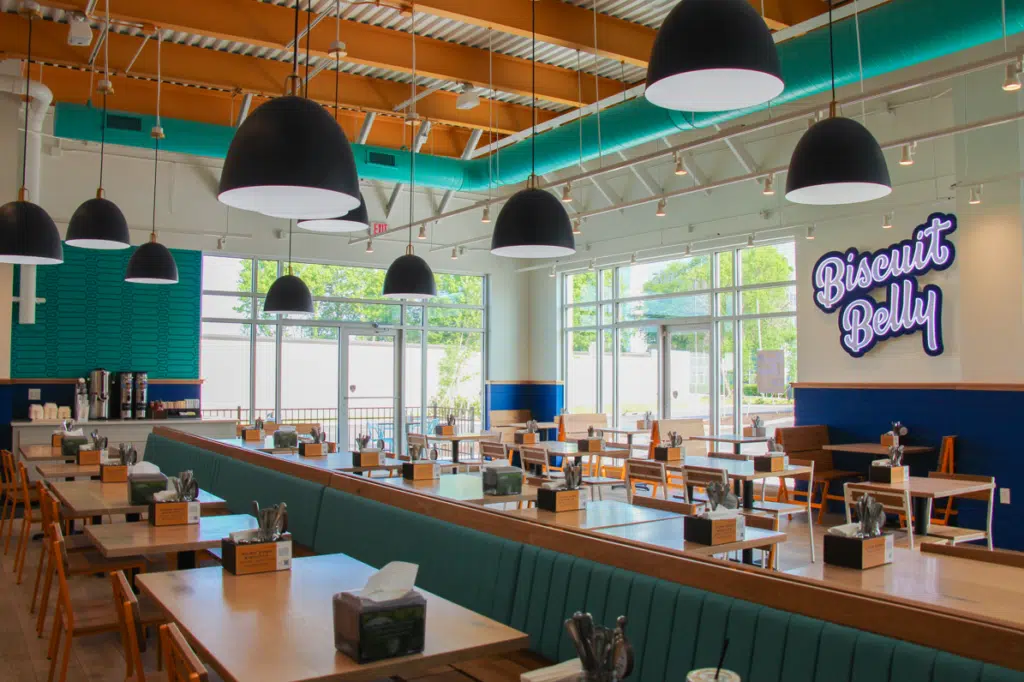
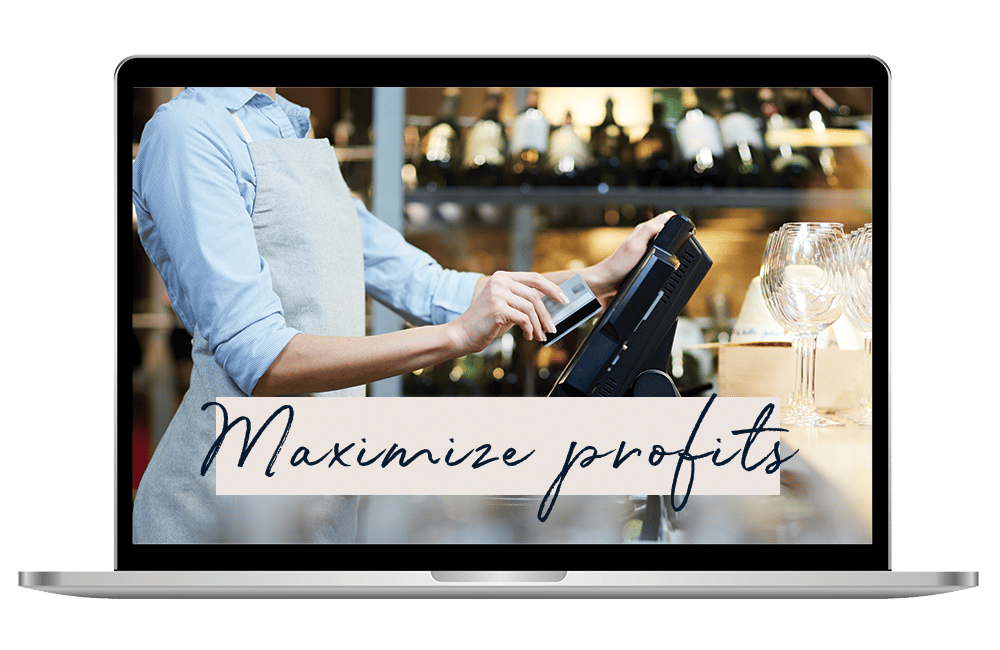
The three costly mistakes you could unknowingly be making?
Find out in this FREE guide and restaurant assessment specifically designed to reveal the unexpected hurdles standing between you and exponential business growth.
Thank You To Our Sponsors
Did You Know That 7 out of 10 Adults Dine Out To Celebrate Birthdays?
You Can Easily Capture This Lucrative Business!
Your operations base camp that scales standard procedures, trains your team, controls operations, and even manages food safety.
Get white glove service with FREE onboarding and implementation.
For a limited time only, popmenu is offering our listeners $100 off your first month plus an unchanging lifetime rate.
Request a DEMO:
Want to become a podcast sponsor?
Please get in touch with Roger at roger@restaurantrockstars.com
